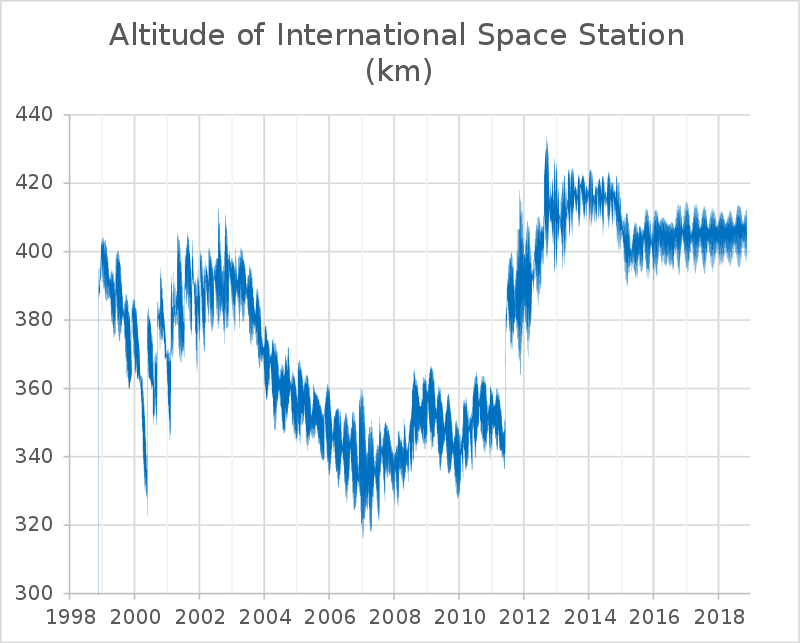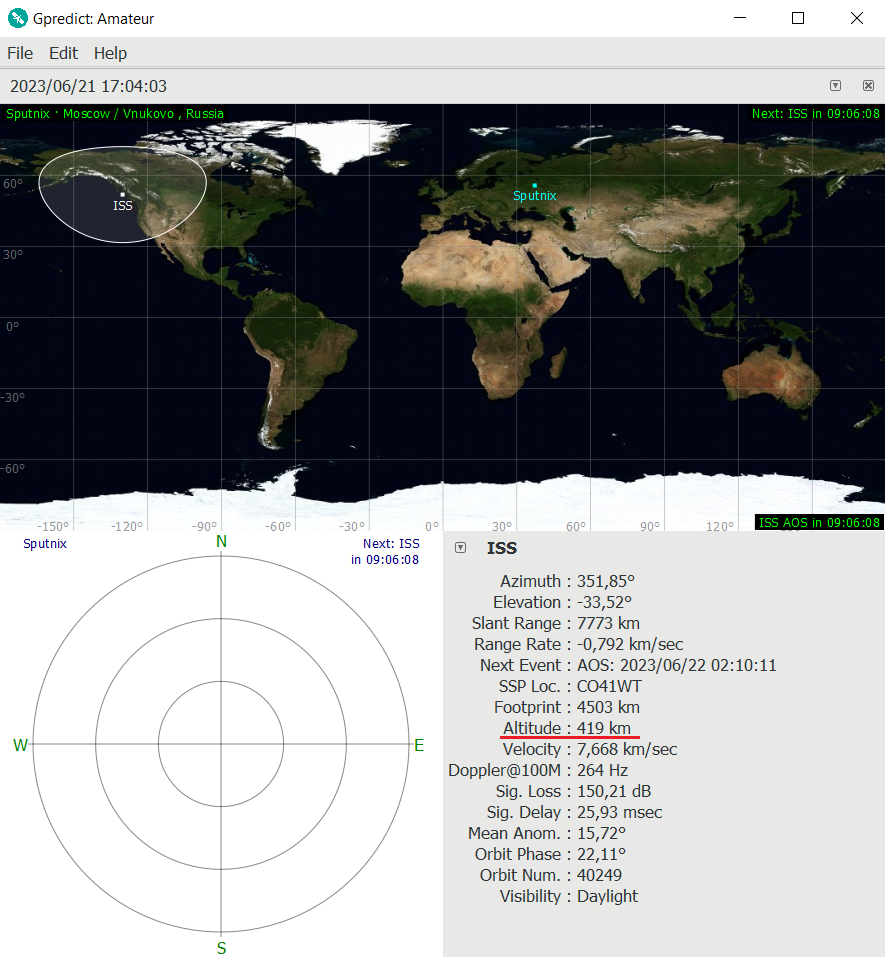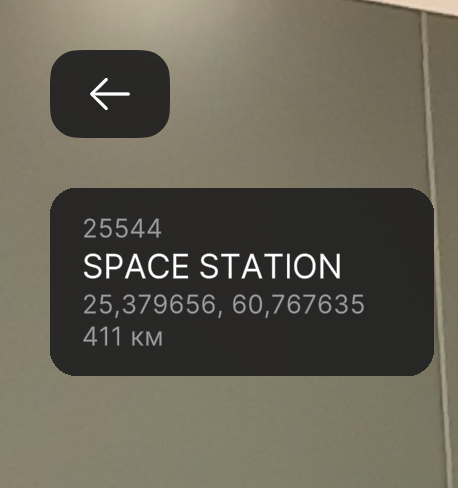ISS orbit
Description of ISS
In this lesson we will learn about the orbit of the largest artificial satellite of the Earth – international Space Station (ISS).
ISS is a joint international project involving 14 countries: Russia, the USA, Japan, Canada and members of the European Space Agency Belgium, Germany, Denmark, Spain, Italy, the Netherlands, Norway, France, Switzerland, Sweden (picture 1):

Picture 1. The International Space Station
The ISS has been in operation since November 20, 1998. On this day, Russia launched the first element of the ISS into orbit — the Zarya functional cargo unit. On December 7, 1998, the Endeavour shuttle docked the American Unity module to the Zarya module, and the ISS began to look like this (picture 2):

Picture 2. The ISS in 1998. Zarya and Unity modules
Later, 12 more modules were docked to the station, and now it consists of 5 Russian modules, 1 Japanese, 1 European and 7 American.

"Zarya" is one of the first modules of the International Space Station. It is equipped with jet engines for station’s orbital correction and big solar panels.
"Unity" is the first of the three connecting modules of the ISS, acting as a docking node and an electric power switch
"Zvezda" is a module that houses flight control systems, life support systems, an energy and information center, as well as cabins for astronauts.
"Poisk" and"Rassvet" are small research modules designed to store equipment necessary for conducting scientific experiments.
"Pirs" — mooring port designed for the docking of the Russian "Progress" and "Soyuz"; installed on the Zvezda module;
"Nauka" — module for the Russian program of scientific and applied research and experiments;
"Destiny" is an American laboratory module docked with the "Harmony" module;
"Quest" is a specialized gateway module designed to carry out spacewalks of astronauts and astronauts;
"Harmony" is a connecting module that acts as a docking node and an electric power switch;
"Tranquility" is a module that performs life support functions. It contains systems for water recycling, air regeneration, and waste disposal.
"Cupola" — transparent observation dome with 7 portholes. The largest is 80 cm in diameter.
"Leonardo" is a multi-purpose supply module.
"Columbus" — European laboratory module with scientific equipment;
"Kibō" is a Japanese laboratory module consisting of three compartments - the largest module of the station.
"BEAM" is an experimental deployable residential module of the ISS, developed by the private space company Bigelow Aerospace, engaged in space tourism. This is the first ISS module developed by a private company. It is currently used as a warehouse.
The altitude of the ISS orbit is constantly changing. Due to friction against the rarefied atmosphere, there is a gradual deceleration and loss of altitude (picture 3):

Picture 3. Changing the height of the ISS
The station's orbit is adjusted using its own engines and the engines of incoming Progress transport ships, which also refuel the station. Recently, the altitude of the orbit has been steadily increasing.
In 2004-2011, the station's orbit was kept lower to increase the total payload of the American shuttles, which then delivered cargo to the ISS.
High orbits are more economical, as there is lower air resistance. If 8,600 kg of fuel was required to keep the ISS in an orbit of 350 km, then with its increase to 400 km, only 3,600 kg is required.
The current parameters of the ISS orbit can be seen in the Gpredict software.
Currently, the ISS is located at an altitude of about 420 km (picture 4):

Picture 4. The current parameters of the ISS in the Gpredict program
Viewing the ISS orbit in AR
Launch AR software and select the mode "Satellites and their orbits" (picture 5):

Picture 5. The main window of the Terra AR application
By default, the ISS is present in the list of satellites located in the upper right corner (picture 6):

Picture 6. List of satellites
If a check mark is set next to the ISS (Space Station), then we will see the orbit of the station in AR mode. There are time stamps on the orbit that show at what time the satellite will be at the specified point in the orbit (picture 7):

Picture 7. Visualization of the ISS in augmented reality
In order to see the satellite, it may be necessary to bypass the Terra complex (picture 8):

Picture 8. The ISS model in augmented reality
Clicking on the eye next to the name of the satellite will make available a widget with information about the height of the satellite and its coordinates (picture 9):

Picture 9. Information about the selected satellite
The time line located at the bottom can be scrolled to see the location of the satellite at a specified time.
The green circles under the satellite show its field of view - the area of the surface where it is above the horizon (picture 10):

Picture 10. The satellite's field of view
Augmented reality mode simulates the flight of satellites in real time, and if you wait, you can see how the satellite moves in orbit.
AR takes information about the real location of satellites on the Internet from the NORAD database.